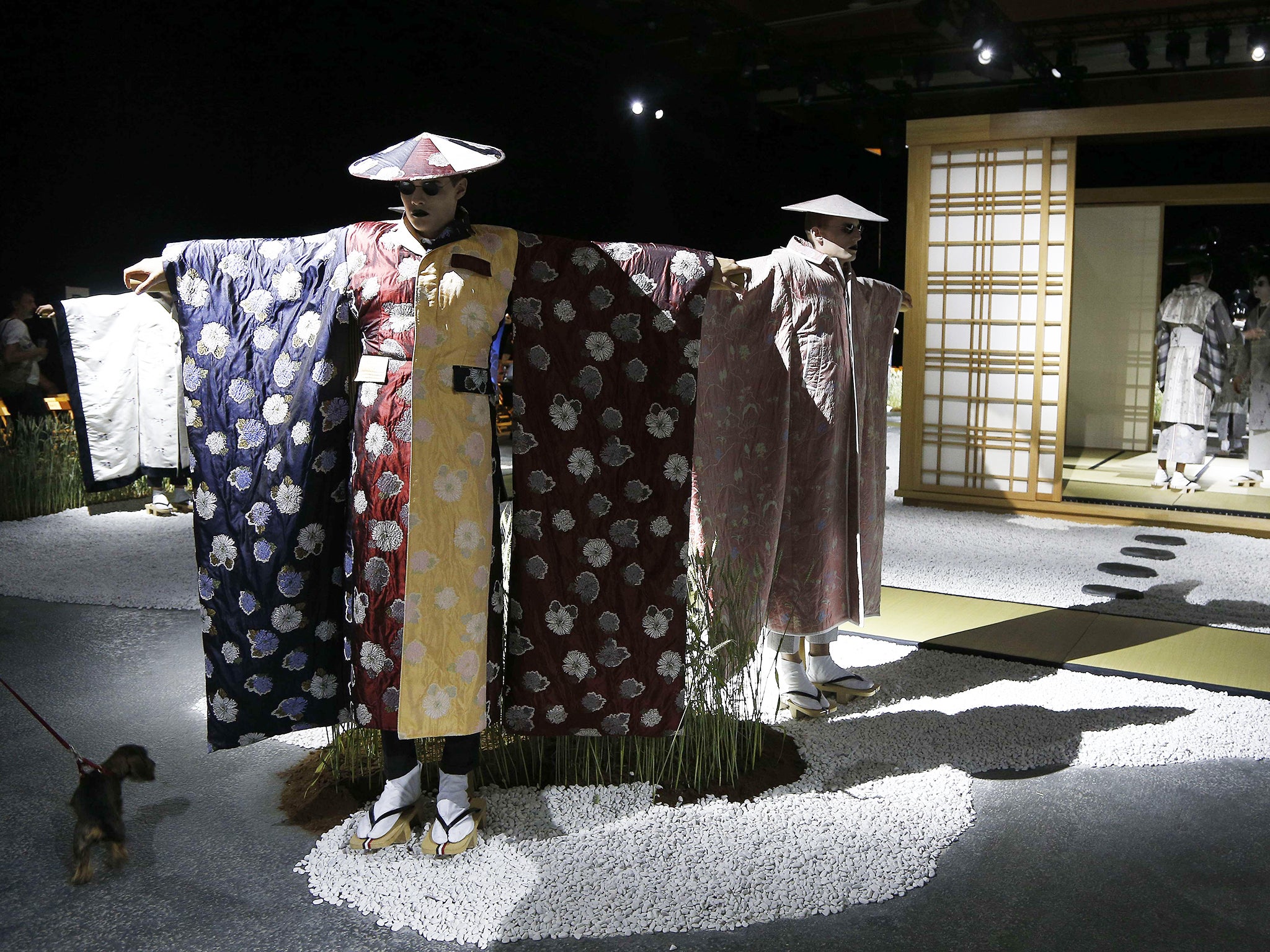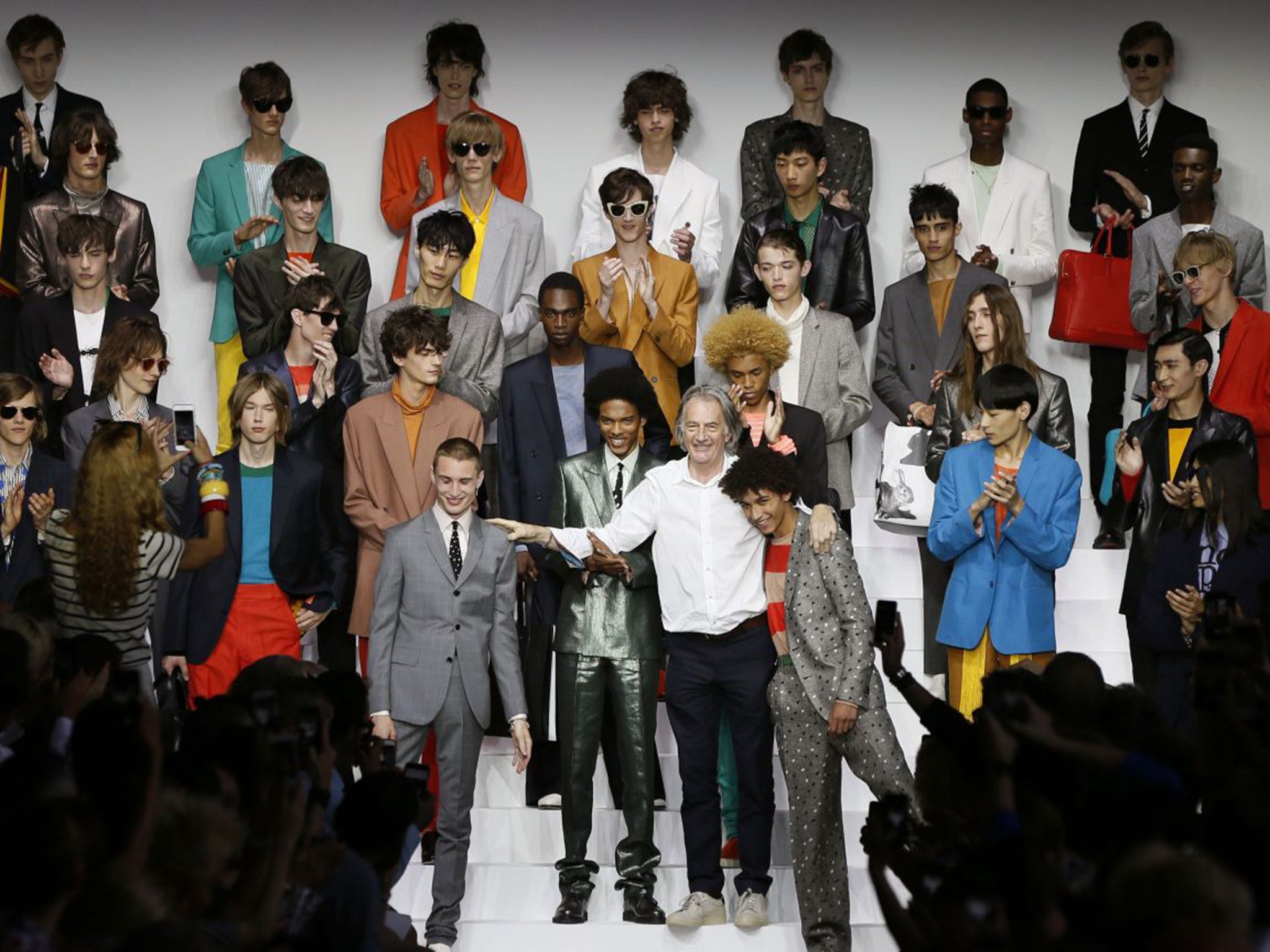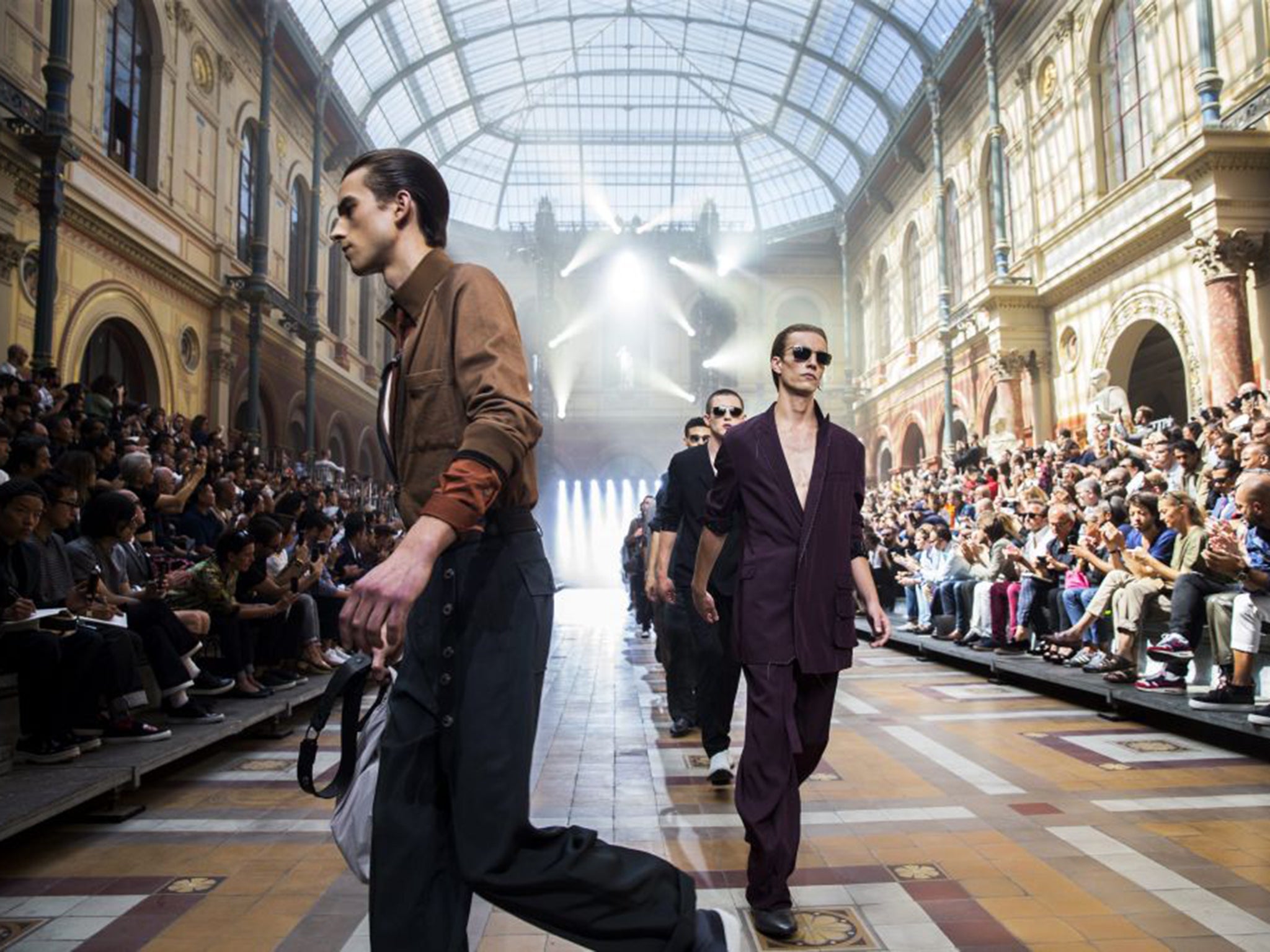Paris Fashion Week: Thom Browne's scarecrows offer a rare beacon in commercial offerings
The designer's collection showcased spectacular technique and invention

Your support helps us to tell the story
From reproductive rights to climate change to Big Tech, The Independent is on the ground when the story is developing. Whether it's investigating the financials of Elon Musk's pro-Trump PAC or producing our latest documentary, 'The A Word', which shines a light on the American women fighting for reproductive rights, we know how important it is to parse out the facts from the messaging.
At such a critical moment in US history, we need reporters on the ground. Your donation allows us to keep sending journalists to speak to both sides of the story.
The Independent is trusted by Americans across the entire political spectrum. And unlike many other quality news outlets, we choose not to lock Americans out of our reporting and analysis with paywalls. We believe quality journalism should be available to everyone, paid for by those who can afford it.
Your support makes all the difference.The Fondation Pierre Bergé - Yves Saint Laurent is the museum devoted to that seminal French designer’s work. It’s on the Avenue Marceau, around the corner from the Palais de Tokyo, where many of the French menswear shows were staged this past week.
At the moment, it’s showing an exhibition devoted to Saint Laurent’s 1971 haute couture collection, inspired by the 1940s. That collection evoked ire and outrage from contemporary press - the exhibition’s subtitle, “La Collection du Scandale,” requires no translation. But, in the end, it won out, and influenced the style of a decade.
I couldn’t help but connect that collection with what Hedi Slimane is doing at Saint Laurent today, because like it or not (and I don’t, at all) his clothes are casting a shadow across the industry as a whole.
There’s a stylistic shadow - the skinny trousers and oversized jackets of Slimane, the attenuated slenderness of his pasty models, the throbbing rock soundtrack and stadium lighting, have all appeared in other shows. Overwhelmingly, however, its the sense of fashion as product, pulling away from a head-to-toe, discernible “look” and instead offering a collection composed of commercial composite parts. It leads to a disparity of vision and, I feel, a weakness. It’s clothes, and not fashion.

You felt that in the shows of Paul Smith and Lucas Ossenjdriver at Lanvin, both of whom offered turbocharged catwalks filled with wearable, saleable and even admirable clothes, but pointedly devoid of an overall message. Who is the Lanvin man today, I wondered? Because what I saw at the label’s show on Sunday morning wasn’t a crystallisation of a vision of how men should dress, but a lot of clobber lobbed together, with little rhyme or reason. Wide with skinny (trousers, both) long (t-shirts tugged to mid-thigh) with short (bell-hop jackets ending around the ribcage). Quite a lot was quite good, the sloppy silk tailoring cut square about the body, best when oversized jackets contrasted with slender shorts and skinny legs, or the reverse, narrow zipped blousons aggressively tucked into baggy, trailing trousers.
Nevertheless, I was struck by the patent unreality of it all, as an overall proposal for head-to-toe dressing. And that’s what designers should be striving to do, I feel - to propose a new way of looking at yourself, and your wardrobe. Not just make clothes. Here, I may be buying one of the papery, voluminous jackets, but I wasn’t buying the message. I’m actually not sure Lanvin had one to express.
Paul Smith clanged the same note. However, Smith is a shopkeeper first, a tailor second, and a designer third. His store on London’s Albermarle street, where his mens and womens collections mix with covetable pieces of furniture, ceramics and even art, is in my opinion one of the best in the city, if not the world. It’s filled with really good suits, in the back, meaning you can spend a grand on a spearmint wool cropped number after you’ve dropped three on a mid-century Italian chair.
For spring, Smith seemed perfectly at ease with his shortcomings. Forget fashion - to be honest, you could push design to one side too - these were plain and simple clothes. In fact, most were Smith’s strong suit of tailoring: skinny suits, slumpy, sloppy oversized suits, in his trademark bright colours - a zingy contrast of green, spearmint and lemon; a lurid Heinz tomato-soup against a cherry red and black; a bag that concertinaed into a prism of red, orange and yellow. If recolouring those Saint Laurent-ish silhouettes failed to give them a distinct identity of their own, it certainly provided a bit of distraction.

Thom Browne is great at distraction. This season, a series of human scarecrows stood sentinel in a Japanese gravel garden, arms painfully hiked onto cruciform bamboo poles in kimonos. More than a few wobbled in their stacked wooden platform sandals and tabi socks. A couple snuck their hands from under their capacious hanging sleeves to scratch noses, and other extremities, as they waited for Browne's latest wheeze to get going. Then a quartet of "Geisha" - blokes got up to resemble a cross between Madame Butterfly and Widow Twanky - popped out of a paper and wood pavilion in the centre to free each one, at a glacial pace, from their colourful cloth prisons.
Underneath the models wore Browne's spring collection, a collection of the shrunken flannel suits he's been making for a dozen years or so. This time each was hand-pieced with Japanese inspired motifs - little fans, spider chrysanthemums, intricate interpretations of Hokusai landscapes, all in the greyscale that has become another Browne signature. We had plenty of time to take them in as his models made their slow, perambulating way, walking slowed to a geta gait across tatami mats (got that theme yet?) in a hot, perspiration-filled warehouse on the outskirts of Paris.
That pace wasn’t especially about us taking in the details of the clothes, though. It was about the Thom Browne experience, a biannual big-top showcase, no expense spared. Its closest comparison is the haute couture, because Browne’s shows are likewise about spectacular technique and invention which isn’t necessarily married to any commercial ends whatsoever. It’s all about that all-important message so many others seem to have forgotten.
Browne’s is unmistakable. In fact, everything about this show - those suits, that colour, the weird, homogenous male-on-male world (always part kabuki theatre, part Deliverance, and part American collegiate hazing ritual) that the designer so painstakingly conjures each season, belongs to him alone. The clothes are always fine, even if they rarely make it onto the backs of even Browne’s most convinced cadre of fans. They’re content to sport his standard suits - the souvenir postcard, if you will, that you can take back home after your visit to Thom Browne’s dove-hued Disneyland.
Join our commenting forum
Join thought-provoking conversations, follow other Independent readers and see their replies
Comments